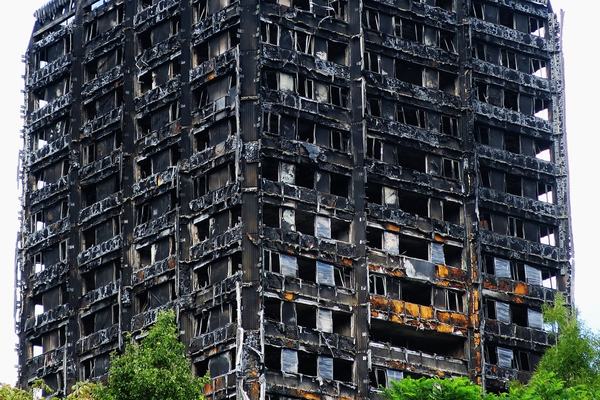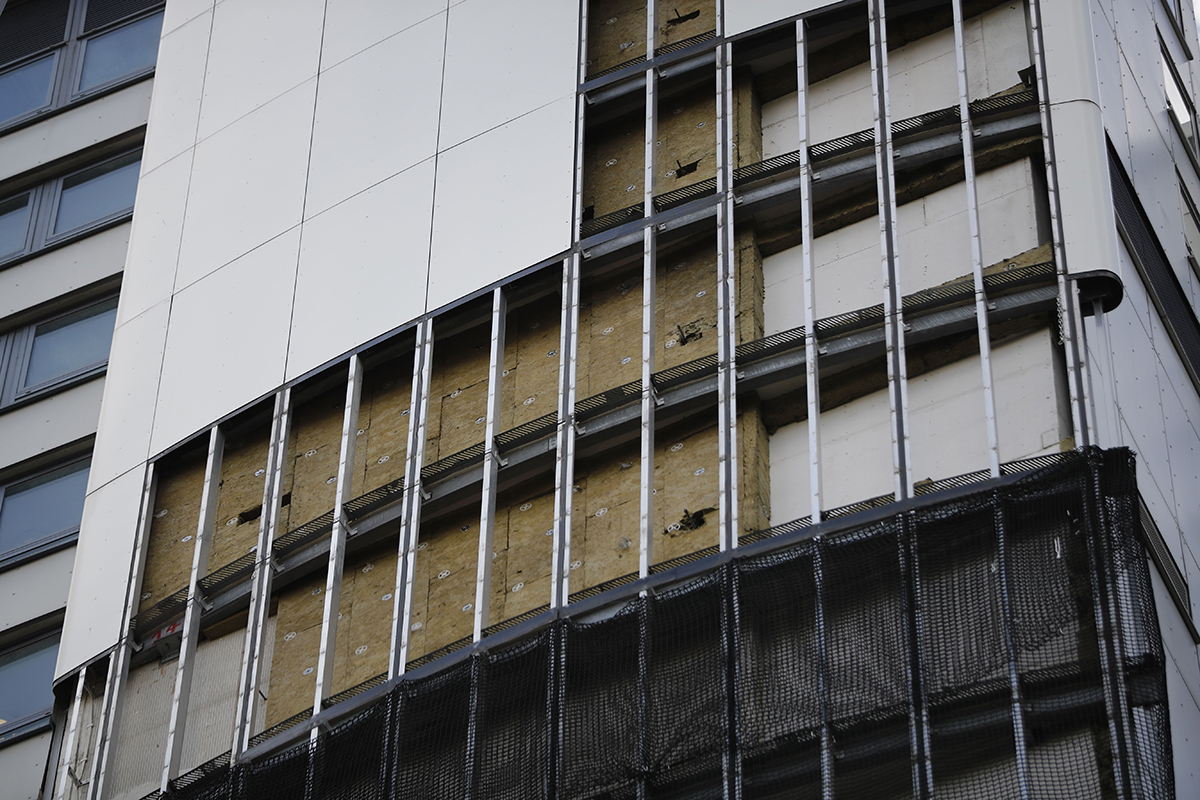You are viewing 1 of your 1 free articles
Insurers’ cladding tests conflict with government post-Grenfell results
Cladding tests carried out for insurers have conflicted with the results of the government’s post-Grenfell cladding tests
The Fire Protection Association (FPA) has completed a round of tests on behalf of the Association of British Insurers (ABI) which it said are designed to be more realistic than the tests done by the government by adding windows and burning plastic.
According to the report on these tests, which has been provided to Dame Judith Hackitt’s review of building regulations, fire spread sideways along the cladding system more easily and the system collapsed more readily than in the government tests.
One test directly compared a government test of aluminium composite material (ACM) cladding with a limited combustibility filler and stone wool insulation – considered to be the safest ACM combination – with a more realistic build-up using the same materials.
The report concluded: “There is certainly scope to question whether the pass result achieved for the [government] test configurations provides adequate assurance of performance for systems using the same materials.”
As previously reported by Inside Housing, the tests aim to produce more realistic results by including windows and other fixings on the walls and adding plastic to the fire to represent more accurately modern blazes, which usually involve burning plastic.
These measures were not taken in the government tests done in the immediate aftermath of the Grenfell Tower fire, which followed the traditional large-scale test design, BS 8414.
The FPA’s initial findings suggested that cavity barriers in cladding systems, designed to expand when fire is detected to stop it spreading up a wall, would fail more often in a realistic environment than in a BS 8414 test.
This conclusion was echoed in the final report, which stated: “Cavity barrier performance cannot be inferred by the BS 8414 test.”
Jonathan O’Neill, managing director of the FPA, said: “The results of this important research confirm long-held concerns by many in the fire sector that the current cladding test standard requires urgent review to ensure that systems that pass are reflective of the systems that are installed and of the risks to which they are exposed.”
A spokesperson for the British Standards Institution, which designed the BS 8414 test, told Inside Housing: “We were notified that the FPA intended to undertake this research work on behalf of the ABI and agreed from the outset that we would share any findings with our standards committee – FSH/21 – for their review.”













